The inaugural Great Southern Foil Fest, Denmark in Western Australia- Lights up with stoke and swell.
The Western Australia surf-foil scene is in it's boom, and here's a little write up from the latest comp: Great Southern Foil Fest.
READ MORE
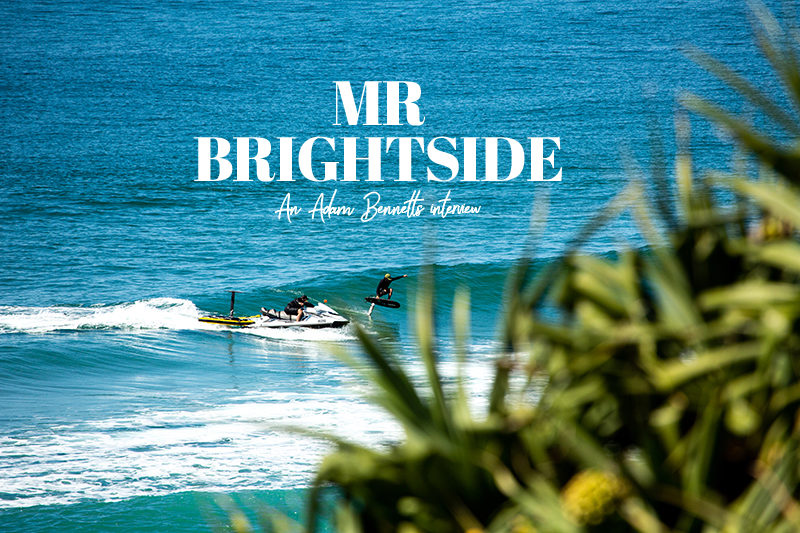
As one of the most stylish prone foilers in the world, Adam Bennetts is another name that will forever be etched into the granite wall of foiling luminaries who are blazing a well-documented and well-respected trail of progression and discovery through these halcyon days of the sport, with his infectious stoke and hard angle turns pulling in plenty of fans across the disciplines. Foiling Magazine contributor Paul Burnett caught up with Adam at home to find out more about his journey into foiling, and his recent work with the UniFoil team…
Words: Adam Bennetts
Photos: Ryan Kenny (unless specified)

My brother had been foiling for a year or two before I started. At the time I was living in Bali, and I never got a chance to really try it because he was living on the Gold Coast. He posted a few videos and I saw it, but it was still at those very primitive stages with pretty much people just going straight, and it looked kind of fun but also looked kind of boring. I was living in Bali, getting barrelled, surfing pumping waves most days.
So I first tried it when I’d moved back to Australia. I was at Wategos one day with Matt Wilkinson, and he had a foil and was kind of into it. I tried to catch two waves and just ate it and that was my first go. I did get like a little bit of a glide which kind of got me intrigued but I also ended up on the foil and cut my back.
Then I was living down the south coast of New South Wales, and my brother came down to visit us for a week and brought his foil. That was when I had a whole session. I spent a whole hour out there and got a few glides, and I was hooked from there. Literally the next day I went and bought a foil. I bought one online on the Friday and it got delivered to me on the Monday. I don't know if I surfed over the weekend but from that Monday when I got it, which was late February or early March 2019, I haven't set foot on a surfboard since then. Two-and-a-half years ago.
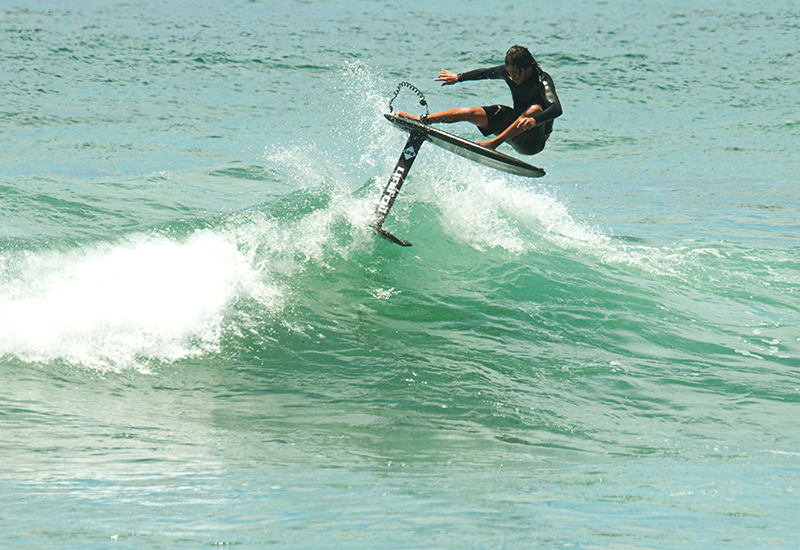
Photo: Ash Whooley
I was living in Bali. I wasn’t living there full-time, but I’d always spend at least eight months there, since I was about 18. I used to surf professionally and then I just started going to Bali and basing myself there. I never really did any contest winning, I was just over there chasing waves and doing little video clips and all that kind of stuff. I wasn’t getting paid that much money, enough to live over there. I was DJing on the side as well. It’s not like I was on some lucrative contract, it was enough to live a lifestyle over there. I pretty much did that for nearly 10 years, I think, and then I met my wife over there and we started our swimsuit business, Fae, making bikinis, and then I kind of transitioned out of surfing. I just kind of lost interest and I was really focused on the business. We were just frothing on it, you know, and we were making heaps of money from it. I never thought I’d be the director of a swimwear company!
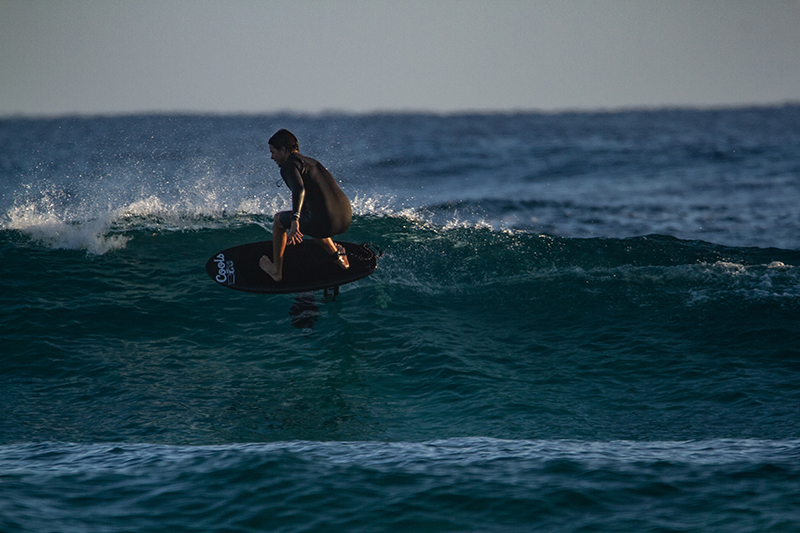
That was the 2019 Naish Thrust medium wing which is the orange and black version they did.
Yes. That’s what he had. At the time it was one of the best surf foils out there, so he just said get that. I was literally getting out there for an hour or so a day. Sometimes two sessions for like about three weeks or a month and then I just outgrew the foil. Kai Lenny was riding the MFC, and a couple of other guys were riding them, and they seemed to be able to do more than what I could do, so I bought the MFC and I was on that for about 6 months. I started talking to Pio (Marasco) from MFC, and he was giving me some discounts and stuff, and I was coming back to where I first started when I was surfing, getting these semi sponsorships. It’s kind of a good sport to be sponsored in I guess, because it's friggin’ expensive!
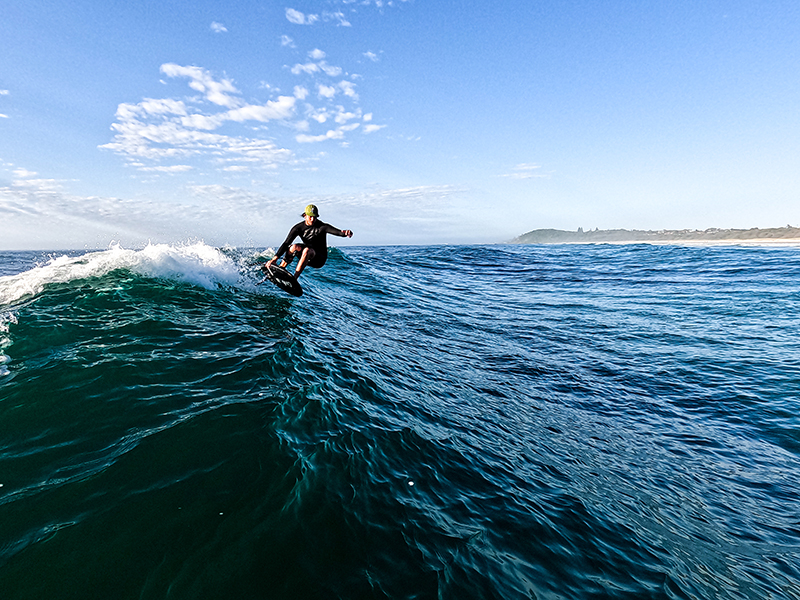
Yeah, Pio was hooking me up. I started trawling Instagram for videos and trying to get better, and you’re just watching all these guys and you start looking at all these hashtags and I then I found Miso Fernando on Instagram. And I also found Kane, and they were both riding the same foil. Miso was riding UniFoil and Kane was riding Signature… So I just thought I’d go straight to the actual designer. I messaged the UniFoil Instagram account, and I was like, “I've seen your stuff and it looks unreal. Is there anywhere I can demo one in Australia?” Clifford (Coetzer, UniFoil founder) was running the Instagram account. He wrote back, and he was super cool. He put me in touch with Matt (O’Rourke), who is now one of the owners of UniFoil, and I messaged him, and he was like, “Yeah, I've got one got one in my garage just 40 minutes up the road from where you live. If you want to grab it, go for it.” So, I just went and got it from his garage. He wasn’t even there. He said just go round the back…
💎 Premium Content Ahead! 💎
*You will receive our weekly Friday Pump newsletter, plus the latest features, gear tests and giveaway announcements.
I went, “Yeah, sick!” It was a Vortex 175. It was so good. I was frothing on it to Clifford and Clifford says, “I've just made this new prototype, can I send one to you?”
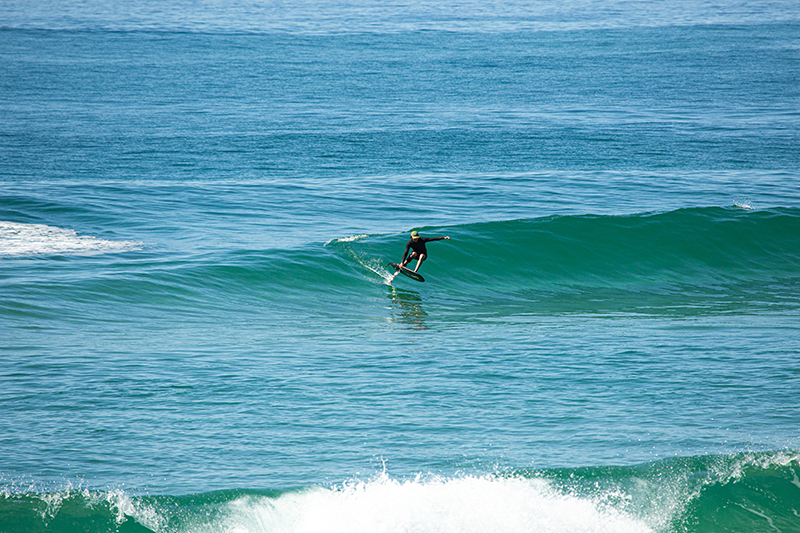
It was a Vortex 150 prototype which is now one of their best-selling foils. He sent it to me and I got on it, and I was like, “Holy shit!”. The 175 was awesome, but yeah getting on the 150… it was smaller, faster, turned better but still pumped pretty much the same, so I was in heaven riding this wing. From then on, I was hooked. I switched to Uni as they offered me a deal, and they had a broad range of foils and a lot of the high aspect movement was inspired by Clifford's Hyper design. I got onto the Hypers and it opened up a whole new can of worms. You could surf these wings, but you can also just pump around for 10 minutes. Basically, that's where I got to where I am now at UniFoil. I've just been working really closely alongside Clifford, Matt and Toby at UniFoil, developing new prototypes.
We did probably three versions of each size and the goal was to make something in between the whole pump and turn. We were looking for that and Clifford did a few drawings, and he was telling me what each would do. Clifford is the expert, but I've learnt a lot about foil sections through my journey… I know what feels good and how to push stuff, and I can push it to its limits. After a few protypes, going through different sizes of the different models we were able to finalize the designs.
Yeah. Because I've learnt so much about what foils actually do, like what they do underwater while we're riding them. It’s been really cool to talk about it, knowing what certain things do and what they feel like and then what you need to change to get to where you want to be.
Even in the very late stages of the prototypes, I had Cliff put an extra degree of angle of attack in the front wings, just to give more pressure on your front foot, without having to use a base plate shim, because I was fine-tuning everything so much, shimming base plates, shimming tails, just doing all kinds of shimming to fine tune it so precisely. It was cool to put that extra angle of attack in the front wing and then getting the next prototype and going, “wow!”. I fine tune my stuff so much, and I spend so much time tweaking stuff to get it exactly how I want it, but you know your average person probably doesn't do that.
I bought a second-hand JS off Paul Stacey who's designing all the foil boards and it was an old 25 litre 4’6”, pretty primitive. I bought that because I didn't know how I was going to like it. Then since I started progressing through the sport, JS started giving me a board here and there and said they’d make me protos. They were working with my brother and with Parko, developing new foil boards, prototypes, just before they release them. They started sending me one of each proto. From six months in, I’ve been really involved in developing these boards and I'm giving heaps of feedback, like I was doing with the Vyper.
What I've found through my progression in the sport is that I really like a thin board. For a while everything went real boat hull shaped and I never liked that because I found it was very unresponsive, having a lot of foam between your foot and the mast. I found that having a thin board that has as much of a surfboard bottom as possible was really helpful in the wash. For me, all I wanted to do was surf a foil like a surfboard. Once you get good enough and you start turning, all you want to do is draw simple lines… the same sort of lines as if I was surfing and doing roundhouse cutbacks, hitting the foam, trying to do carves in the pocket, and stuff like that. Then when you touch down and you're going back to shore, the foil should lift you out of the water again and you're away. I learnt a lot through the videos I made with Aaron Smith from Earth Kitesurfing.
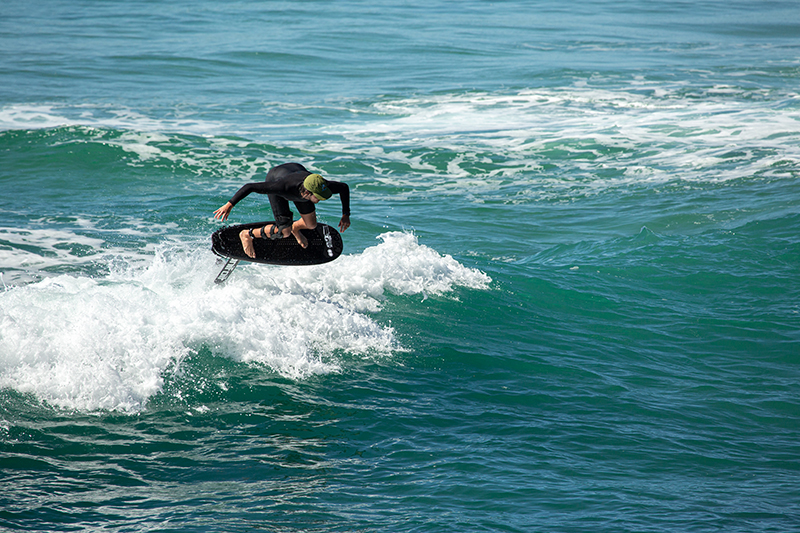
He’s the best driver and filmer in the business. In my videos I would notice that when I'm really leaning into a really deep carve, it was always the back third of my board that would be touching the water. I worked out through making a couple of prototypes that you don’t need all the area at the tail of the board.
Haha, yeah. You might think you need it for volume or whatever, but what we did was basically turn the board into something almost like a teardrop…
Yeah. So, you have your foam under your chest for paddling and also for stability when you do your foam rebounds or whatever, because you need to get stability under your front foot. Any time you come in contact with any foam or anything, you’re pretty much on your front foot because you tend to accelerate once you get in that foam and it pushes you out, so you’re kinda leaning forward anyway, just keeping the foil in the water. Then you know if you're doing your snaps or carves and you’re coming back down the face, you’re definitely leaning forward. So having a wider area under your chest and then pulling the tail area in so much has helped a lot. I’ve been talking to Kane de Wilde and when I posted that we started talking about the narrowness of the tail and he said “yeah, I just made a board, and I measured my foot and just made the tail as wide as my foot.” Just got a ruler out and measured how long his foot is and made where he stands the width of his foot. His foot just fits on his board. So yeah, he has the same sort of ideas as me.
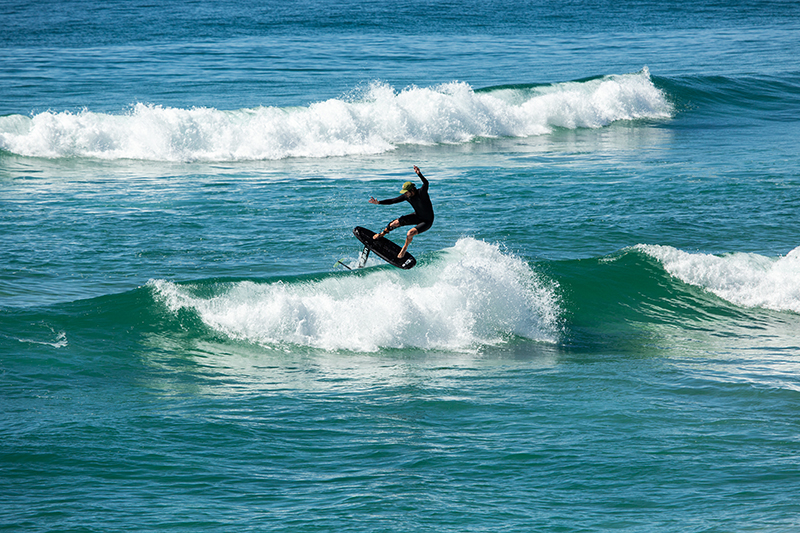
The MFC was a real game changer for me. It was really good between turns. It was fast. It felt real surfy. I also moved down to the shorter fuselage as well. A 58cm fuselage. That definitely helped because when you shorten your turning radius you've got more time to look at the wash. When you turn sharper, you’ve got more time to assess the situation, where if you have a longer fuse or on a bigger wing that doesn't turn as good, you generally go into a turn and you don't really know where the whitewash is because you’re going through this big long arc. It’s pretty daunting. But if you can do a really sharp turn, you’ve got a lot more time and you can really gauge what the whitewash is doing. It gave me a lot more confidence to know whether or not I'm going to hit that section. Having more time to look at the wash is, I think, what gives me more confidence. A short fuse can do that for you.
Funnily enough, I don't like riding a short fuse anymore. Over my time progressing, I've experimented with a few crazy short fuses. Clifford's made me ones that are stupidly short. They’re fun and novelty, really rippy, but at any kind of speed they get squirrelly. They’re probably fine on entry-level “generation 1” foils that are generally pretty slow, but anything in this current development of pro foils are so fast that at speed they’ll become pitchy with a short fuse, and it ruins the whole experience of the ride, because she's going up and down like a pogo stick. What I've found now is that the best way to achieve a tight turning radius and have a smooth ride is to ride a longer fuse with a with a smaller tail and a shim, a big shim. So I'm riding an 11 1/2 inch tail with a 1.5 degrees shim in it, but it's still on a 63cm fuse, which is the UniFoil long fuse…
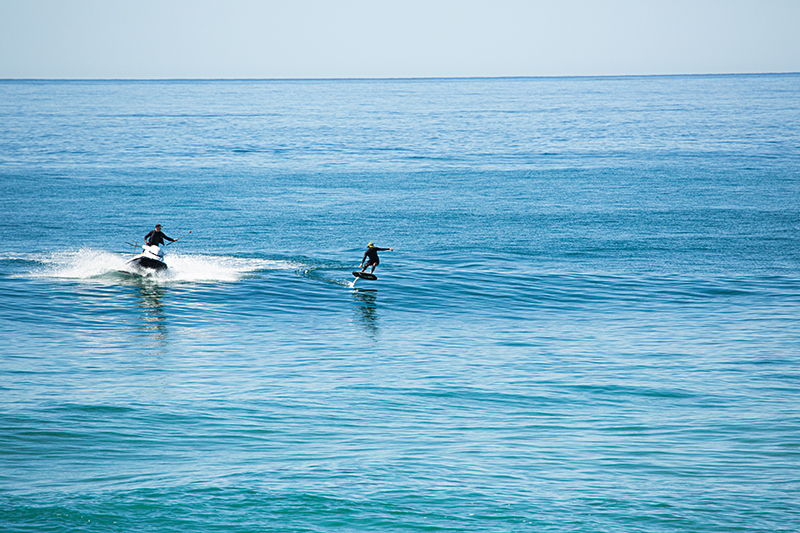
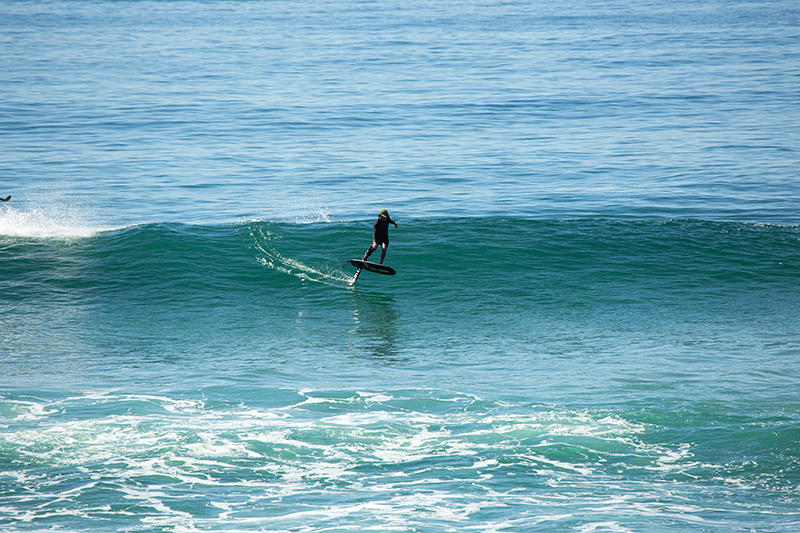
The Turn? Oh. The Turn. Haha!
The Tommy Carroll turn?
Yeah, that was unreal that day. That was the day when I got the last proto version of the 130 Vyper that is going into production. I hadn’t actually ridden it yet, and that was the very first ride on it. I had to go somewhere and I only caught two or three waves on it, and that was one of them. It’s just one of those things. The Vyper is really stable at high speeds but turns so good. I had the perfect section, and everything came together, and the wing held so well through that turn. A lot of times, foils at a certain speed want to nosedive, but the Vyper allowed me to turn really sharply.
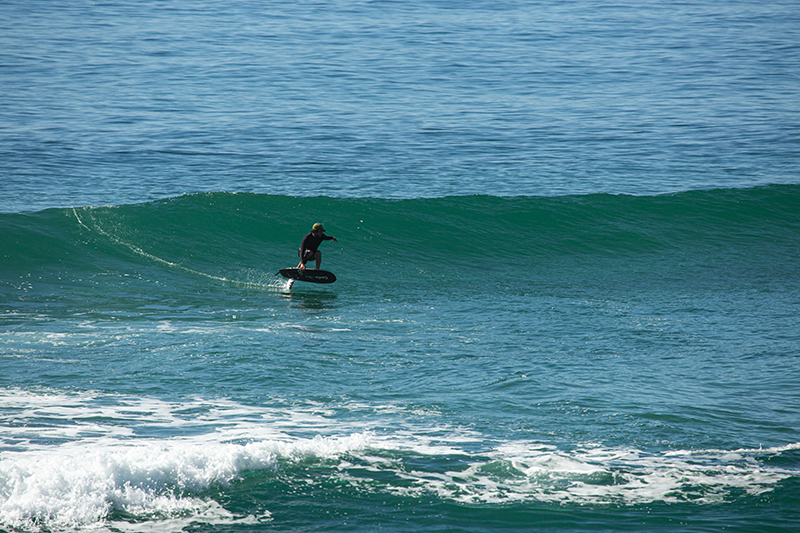
Yeah, it felt unreal. Arron was in the perfect spot to capture it. He whipped me out onto it. It was this peak that I was like able to come in behind with heaps of speed. The wing allowed me to turn really sharply. It felt like one of those really nice carves off the top that you can you do shortboarding.
The biggest thing I can say in regards to progression in this sport is to try heaps of things and move stuff around. Shimming has definitely been a game changer for me, so get yourself some shims from whatever company you're riding. If they don't have one, make some out of credit cards. For shimming the base plate, I was using window packers like builders use. It's crazy how shimming something half a degree can change the whole feel of the whole ride, and make it feel so much better.
A lot of these companies, they've all got different backgrounds. Some are kite guys some are SUP guys… So if you're a surfer and you want to get a surf feeling, try changing their angles, because different angles can change the whole ride. They might have designed it to be a winging wing and just go fast and straight, and if you change the angle of the tail or the base or even the front wing by tuning the base plate, it can change the whole feel of it and make your experience more enjoyable for you. You know, for me, my goal is to surf foil and try and surf the wings like I would a shortboard. So that's my biggest takeaway. Muck around with your shims.
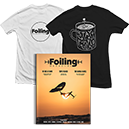
Now subscribe to the world's best foiling magazine!
The Western Australia surf-foil scene is in it's boom, and here's a little write up from the latest comp: Great Southern Foil Fest.
READ MOREOffering his industry-level-insight into where the sport of foiling is likely to find itself in the coming years is Eleveight Co-founder and Sales Manager, Phil Martin…
READ MOREAs a kitefoil transplant who’s steadily working his way up the wingfoiling competitive ladder, Lucas Matthes is representative of several European young guns who are looking to move out of the national pro scene and into the international realms. Photos: Andreas Diekötter RIDER STATS Age: 20 Height: 179cm Weight: 73kg Sponsors: CORE Wingfoil, Soöruz Competitive
READ MORE